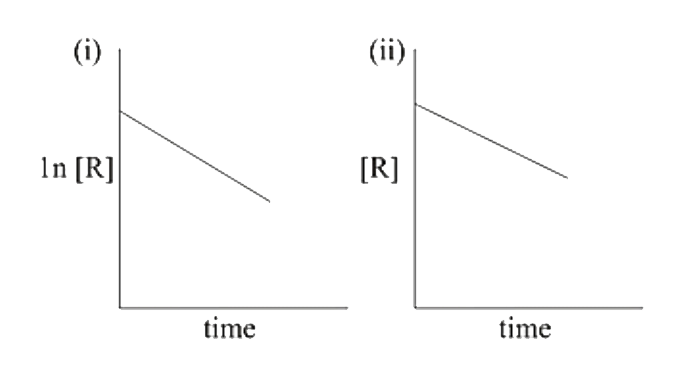The concentrations of a reactant R at different times are given below:

Calculate the average rate of reaction, R→P during different intervals of time.Solution in Punjabi
Step by step video & image solution for The concentrations of a reactant R at different times are given below: Calculate the average rate of reaction, R rarr P during different intervals of time. by Chemistry experts to help you in doubts & scoring excellent marks in Class 12 exams.
Topper's Solved these Questions
Similar Questions
How can we express the rates of following reactions in terms of concentration of reactants and products ?
2O3↔3O204:35View SolutionComplete the following statement- Uses for solder are-
View SolutionTrue or False : Equanil, used as tranquilizer, is a derivative of barbituric acid.
02:23View SolutionAverage rate of reaction : From the concentrations of R at different times given below, calculate the average rate of the reaction :
R→P
During different intervals of time
t/s05102030103×[R]/molL−11608040102.5
Strategy : Determine the difference in concentration, Δ[R] over different intervals of time. Divide Δ[R] by Δt to determine the average reaction rate.02:45View SolutionFor the reaction R→P, the concentration of a reactant changes from 0.03 M to 0.02 M in 25 min. Calculate the average rate of reaction using units of time in seconds.
02:09View SolutionFor the reaction R→P when concentration of R is made double the rate of reaction becomes 2.828 times the order of reaction is
06:13View SolutionThe concentrations of the reactant A in the reaction A to B at different times are given below: The rate constant of the reaction according to the correct order of reaction is :
02:46View SolutionFor the reaction, R→P, the concentration of a reactant changes fro 0.03 M to 0.02 in 25 min. Calculate the average rate of reaction using units of time both in minutes an second.
03:11View SolutionThe given plots represent the variation of the concentration of a reactant R with time for different reactions (i) and (ii). The sum of orders of the reactions is ________ .
01:56View SolutionThe given plots represent the variation of the concentration of a reactant R with time for different reactions (i) and (ii). The respective orders of the reactions are:
02:17View SolutionThe given plots represent the variation of the concentration of a reactant R with time for two different reaction (i) and (ii) The respective orders of the reactions are
 02:36View Solution
02:36View SolutionFor the reaction R→P, the concentration of reactant changes from 0.03 M to 0.02 M in 25 minutes. Calculate the average rate of reaction rate of reaction using units of time both in minutes and seconds.
05:44View SolutionFor the reaction R→P the rate becomes 4 times faster when the concentration of the reaction R is doubled at a given temperature. What is the order of the reaction?
03:01View SolutionFor a reaction R→P the rate becomes 2 times when the concentration of the reactant A is 4 times. What is the order of the reaction.
03:46View SolutionFor the reaction R→P the concentration of a reactant changes from 0.03 M to 0.02 M in 25 minutes. Calculate the average rate of reaction using units of time both in minutes and seconds.
02:33View SolutionFor the reaction R→P,the concentration of a reactant change from 0.03 M to 0.02M in 25 minutes. Calculate the average rate of reaction using units of time and seconds.
03:44View Solution

